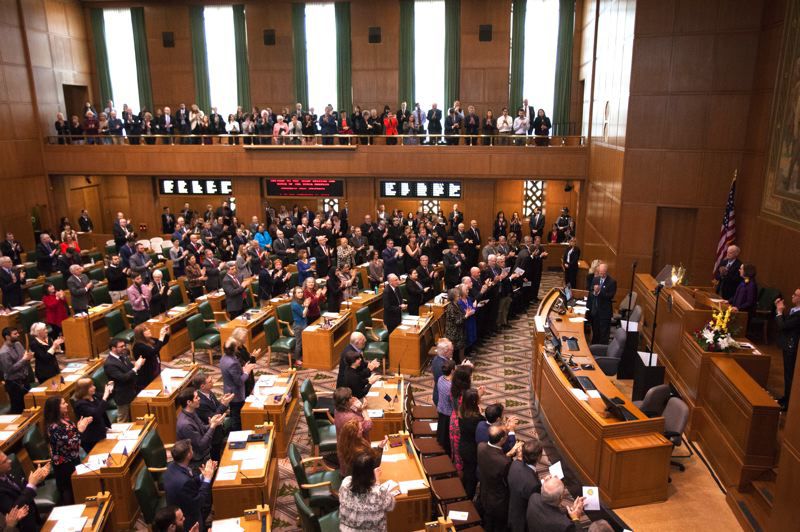Supporters, opponents of Measure 104 make case
Published 7:00 am Friday, August 31, 2018

- The status of the Oregon House, as shown in file photo, is still uncertain the day after the 2022 election. Democrats say they have retained majorities in both chambers of the Legislature, but returns show they likely will lose three-fifths supermajorities when all votes are tabulated.
PORTLAND — Oregonians will have a chance to vote this November on how much legislative support certain state tax laws should need to pass.
Supporters and opponents made their case for and against Ballot Measure 104 Friday before an editorial board meeting of the Pamplin Media Group.
The measure would amend the state Constitution to require a three-fifths majority, or “supermajority,” approval in both the Oregon House of Representatives and Senate for changes to tax expenditures such as credits, exemptions and deductions.
If approved, the measure would also require bills containing fee increases — for fishing licenses, for example — have supermajority approval.
Given the current makeup of the Democrat-majority Legislature, those measures would require some Republican support to pass.
In 1996, Oregon voters approved a three-fifths majority requirement for bills “raising revenue.”
This, supporters of Measure 104 say, meant that any bill modifying a tax expenditure was interpreted to require a three-fifths majority vote, and this is how lawyers for the Legislature interpreted the Constitution for years.
But in recent years, the courts have said that in order to be considered a bill for “raising revenue” under the state constitution, and thus require the three-fifths majority, a proposed bill must meet two tests: it must collect or bring money into the state treasury, and either impose a new tax or increase the rate of an existing tax.
The measure would essentially define what it means to “raise revenue,” and that definition would apply to a broader range of tax measures than the current legislative counsel interpretation.
Supporters of Measure 104 say that the measure would encourage bipartisanship and force lawmakers to work together to write legislation that is palatable to three-fifths of lawmakers.
Supporters also point to Senate Bill 1528, passed earlier this year by a simple majority, as an example of legislation that, in their view, should have required a three-fifths majority vote to pass.
That bill disallowed Oregon taxpayers from taking a new federal deduction from their state taxes.
Had the Legislature not acted to disconnect from federal tax reforms, projections showed taxpayers would pay about $1.3 billion less in state taxes over the next six years.
“Regardless of how they’re doing it, $1 billion in new revenue on a simple majority vote, there was bipartisan opposition, but there was no bipartisan support for that,” said Paul Rainey, who manages the Yes on 104 campaign. “That was pushed through from a legislative perspective and it unfairly targets…small businesses and hardworking families that don’t have access to those funds that they should have had.”
Opponents of the measure, on the other hand, say it could intensify a culture of “horse-trading” in the Capitol, and create legislative gridlock.
If lawmakers know that just a few votes stand between the measure passing and failing, they could withhold support until they get something else they want, opponents of 104 say.
“If you’re going to go 10 rounds on the state Board of Nursing, you’re going to go 10 rounds on every single board and commission who has a fee associated with it,” said Becca Uherbelau, executive director of Our Oregon, a progressive political coalition that opposes Measure 104. “And it could be any reason why someone objects to a fee.”
Opponents also say that it could be harder to discontinue tax expenditures that no longer serve the public interest, and force cuts to services such as health care and education.
“I know we’ve got all sorts of examples of tax breaks for golf courses, tax breaks for heated pools,” said John Bartholomew, director of government relations for AARP Oregon. “So is that more important than helping make sure our most vulnerable citizens are protected?”
Election day is Nov. 6.





